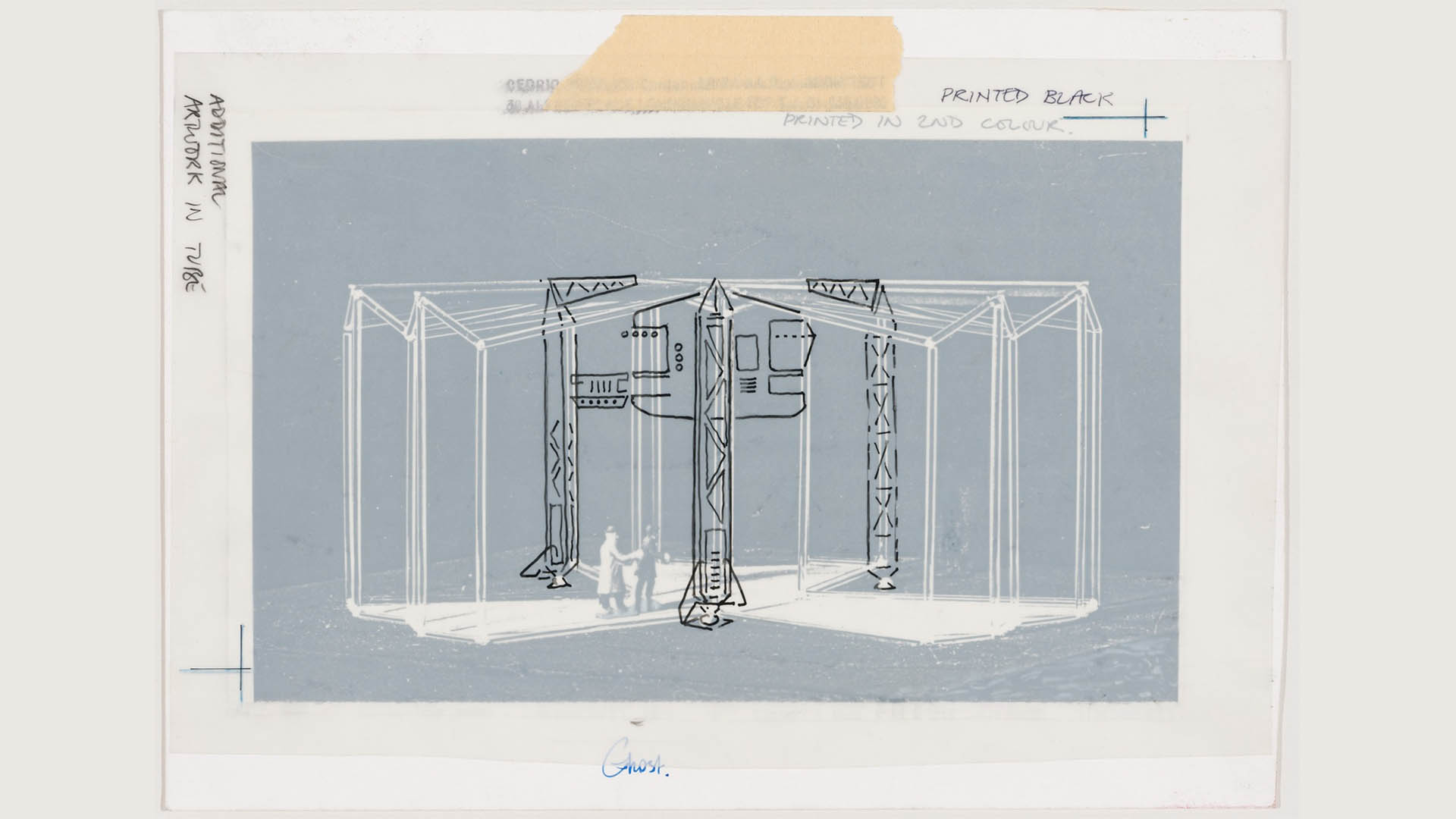Grants made as part of The Paper Project feature diverse and understudied collections
LOS ANGELES – Nineteen new grants totaling over $1.55 million will support exhibitions, publications and digital projects that center the graphic arts as part of the Getty Foundation’s ongoing Paper Project initiative.
Prints and drawings are an unsung area of curatorial innovation and a place for museums to bring new forms of storytelling to their permanent collections. Launched in 2018, The Paper Project funds professional development and experimental projects for curators around the world who study prints and drawings to make graphic arts collections more accessible and relevant to 21st-century audiences.
“Permanent collections that include prints and drawings are the lifeblood of museums, archives and libraries,” says Heather MacDonald, senior program officer at the Getty Foundation. “As the cultural sector moves into post-pandemic rebuilding, institutions have a tremendous opportunity to refocus on their own holdings while they also invest in the professional growth of their staff. These grants provide the resources needed to take a deep dive into seldom-seen collections and develop creative and relatable ways to display works on paper in galleries, in print and also online.”

“Montage illustrating stage 2 for CP Aviary”, ca. 1983, electrostatic print with coloured pencil on paper. Cedric Price fonds. Canadian Centre for Architecture. Copyright Notice: Cedric Price fonds. Canadian Centre for Architecture
The curatorial projects represent collections of prints and drawings created across more than a millennium and dozens of countries. They also demonstrate the wide range of works on paper that exist, including personal travel journals, political posters, illuminated manuscripts, architectural plans and maps, woodcuts, acid-based etchings and more. Participating curators have chosen a variety of in-gallery and digital solutions to present these objects in fresh and compelling ways.
Many grant projects will focus on understudied techniques, collections and artists. At the Chrysler Museum of Art in Norfolk, Virginia, curator Kimberli Gant is investigating the history and legacy of printmaking on the African continent in relation to an understudied body of work from one of America’s foremost modern printmakers, Jacob Lawrence. Gant’s scholarship is culminating in an exhibition about Lawrence’s works on paper inspired by travels to Nigeria and his interactions with the Mbari Club, a network of artists, writers and musicians that emerged from the socio-political upheaval across West Africa.
“This will be the first in-depth investigation of Lawrence’s little-known time in Nigeria and the works he created there. It provides an opportunity for viewers to consider Lawrence as not an exclusively American artist, but one interested in humanity, in portraying the everyday lives of the people he encountered throughout the world or through the stories he was told,” says Gant. “In addition, the exhibition presents the larger interwoven artistic shifts happening in Nigeria during the first decade of independence, and the importance of international exchange between African American and African artists, an area that also needs further research.”
A number of grants support digital-only projects that are using technology to turn challenges in research or display into opportunities. The arsenic-laced, extremely fragile pages of an album containing 1,800 rare silhouette portraits by early 19th century artist William Bache have vexed curators at Smithsonian’s National Portrait Gallery for years. Featuring sitters that range from political and social elite such as Thomas Jefferson and Martha Washington to marginalized, unidentified individuals rarely encountered in Federal-era portraiture, Bache’s album is a significant piece of early American history.
As the Smithsonian has struggled to find ways to make the album available for study or display without risking the safety of researchers or art handlers, National Portrait Gallery curator Robyn Asleson will use a Paper Project grant to securely digitize the full album and develop a microsite that features historic documents that bring the stories of the people depicted to life.
“The Bache album attests to the function of hand-cut silhouettes as a uniquely democratic art form prior to the invention of photography. These silhouettes capture a fascinating cross section of society, documenting hundreds of individuals for whom no other likeness exists,” says Asleson. “In addition to fully documenting Bache’s album through high-resolution digital images, the microsite will provide biographical information on identifiable sitters, primary documents (such as the artist’s newspaper advertisements), conservation reports and other contextual materials that will advance understanding of the social fabric of the period and also assist in identifying, dating and authenticating silhouettes attributed to Bache.”
Because prints and drawings lend themselves to the rapid transmission of ideas, they have often been used by progressive artists to provoke conversation and promote social change. The National Gallery of Slovenia will present the work of Hinko Smrekar, an illustrator and satirist known for his biting political commentary, who was executed by the Italian fascist government without trial in 1942. Getty’s support of a publication and microsite of his work in English overseen by curator Alenka Simončič will greatly expand access to Smrekar’s contributions and position him among other political artists of the early 20th century.
“Smrekar’s versatility and rich artistic expression set him apart from any particular art movement. Although he mostly lived in Ljubljana and commented on local, Austrian-Hungarian and later Yugoslavian culture, he closely followed world affairs and often titled his works in foreign languages to make them understandable to many,” says Simončič. “Through this project we can admire Smrekar’s courage, honesty and precision as he warned against the permanent faults of human nature, from pride and ignorance to greed and hypocrisy.”
Grantees this year include (full descriptions of grants available here):
National Organizations
Chrysler Museum of Art - For an exhibition on Jacob Lawrence and the Mbari Club, a nexus of cultural activity in post-independence Africa that published the Black Orpheus journal. Project curators: Kimberli Gant (Chrysler) and Ndubuisi Ezeluomba (New Orleans Museum of Art)
Cooper Hewitt, Smithsonian Design Museum - For a digital project on the sketchbooks of Johannes Stradanus. Project curator: Julia Siemon
International Print Center New York - For an exhibition and accompanying publication on Margaret Lowengrund, the first woman in the United States to open her own hybrid printmaking workshop/gallery—The Contemporaries gallery. Project curators: Christina Weyl and Lauren Rosenblum
Isabella Stewart Gardner Museum - For an exhibition and accompanying publication on the travel sketchbooks of Betye Saar. Project curator: Diana Greenwald
Los Angeles County Museum of Art (LACMA) - For an exhibition on two key episodes in 20th-century political printmaking: German Expressionism after World War I and Mexico City’s Taller de Gráfíca Popular. Project curators: Erin Sullivan Maynes and Rachel Kaplan
MAK Center for Art and Architecture - For an exhibition on collaged mechanical documents, an essential but often unseen medium of 20th-century architectural prints and drawings. Project curator: Sarah Hearne
Museum of Fine Arts, Boston - For “Digital Koehler,” an online project featuring historical printing techniques and technologies based on a landmark exhibition held at the MFA in 1892. Project curator: Meghan Melvin
National Portrait Gallery, Smithsonian Institution - For a digital project on an album of cut-paper silhouettes by William Bache (1771–1845). Project curator: Robyn Asleson
Winterthur Museum, Gardens & Library - For a publication and digital project on the Denig Illuminated Manuscript, a key document of early American folk art and religious life. Project curator: Stéphanie Delamaire
International Organizations
Ashmolean Museum of Art and Archaeology, University of Oxford - For a digital project on early modern German drawings. Project curators: Mailena Mallach and An Van Camp
British Library - Two grants to support the publication of a handbook on the Library’s prints and drawings and an exhibition and catalogue on scientific representations of animals from the 2nd century to the present. Project curators: Felicity Myrone; Cam Sharp Jones and Malini Roy
City Palace Museum, Maharana of Mewar Charitable Foundation - For an exhibition and publication on 18th- to 20th-century maps and landscapes from Udaipur, India. Project curator: Shailka Mishra
Fondazione Giorgio Cini - For an exhibition and catalogue on single-leaf woodcuts of the Italian Renaissance at the Musei Civici in Pavia, Italy. Project curators: Laura Aldovini, Ludovica Piazzi, and Silvia Urbini
Kunstmuseum Basel - For The Acid Lab, an interactive digital experience that explores acid-based etching techniques. Project curator: Marion Heisterberg
Museum Plantin-Moretus - For an exhibition and publication of Netherlandish and Flemish Old Master drawings. Project curator: Virginie D’haene
National Gallery of Slovenia - For a publication and digital project on the life and work of satirist Hinko Smrekar. Project curator: Alenka Simončič
National Portrait Gallery, London - For the conservation and display of works on paper from the Lucian Freud Archive, the largest collection of Freud’s drawings in public hands, when the Gallery reopens in 2023, following a major redevelopment. Project curator: Tanya Bentley
Royal Museums Greenwich, National Maritime Museum - For a digital project on the drawings of Willem van de Velde the Elder and the Younger. Project curator: Allison Goudie
More information about The Paper Project and past and present grants can found here.
Getty is a leading global arts organization committed to the exhibition, conservation, and understanding of the world’s artistic and cultural heritage. Working collaboratively with partners around the globe, the Getty Foundation, Getty Conservation Institute, Getty Museum and Getty Research Institute are all dedicated to the greater understanding of the relationships between the world’s many cultures. The Los Angeles-based J. Paul Getty Trust and Getty programs share art, knowledge, and resources online at Getty.edu and welcome the public for free at the Getty Center and the Getty Villa.
The Getty Foundation fulfills the philanthropic mission of the Getty Trust by supporting individuals and institutions committed to advancing the greater understanding and preservation of the visual arts in Los Angeles and throughout the world. Through strategic grant initiatives, the Foundation strengthens art history as a global discipline, promotes the interdisciplinary practice of conservation, increases access to museum and archival collections, and develops current and future leaders in the visual arts. It carries out its work in collaboration with the other Getty Programs to ensure that they individually and collectively achieve maximum effect. Additional information is available at www.getty.edu/foundation.





